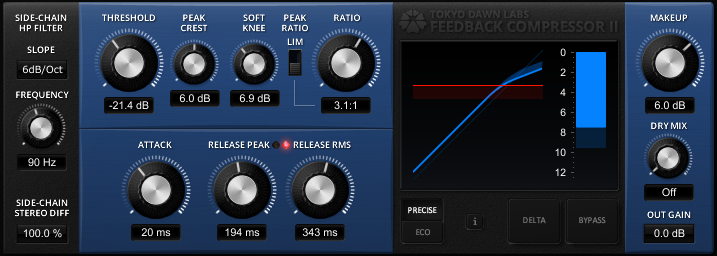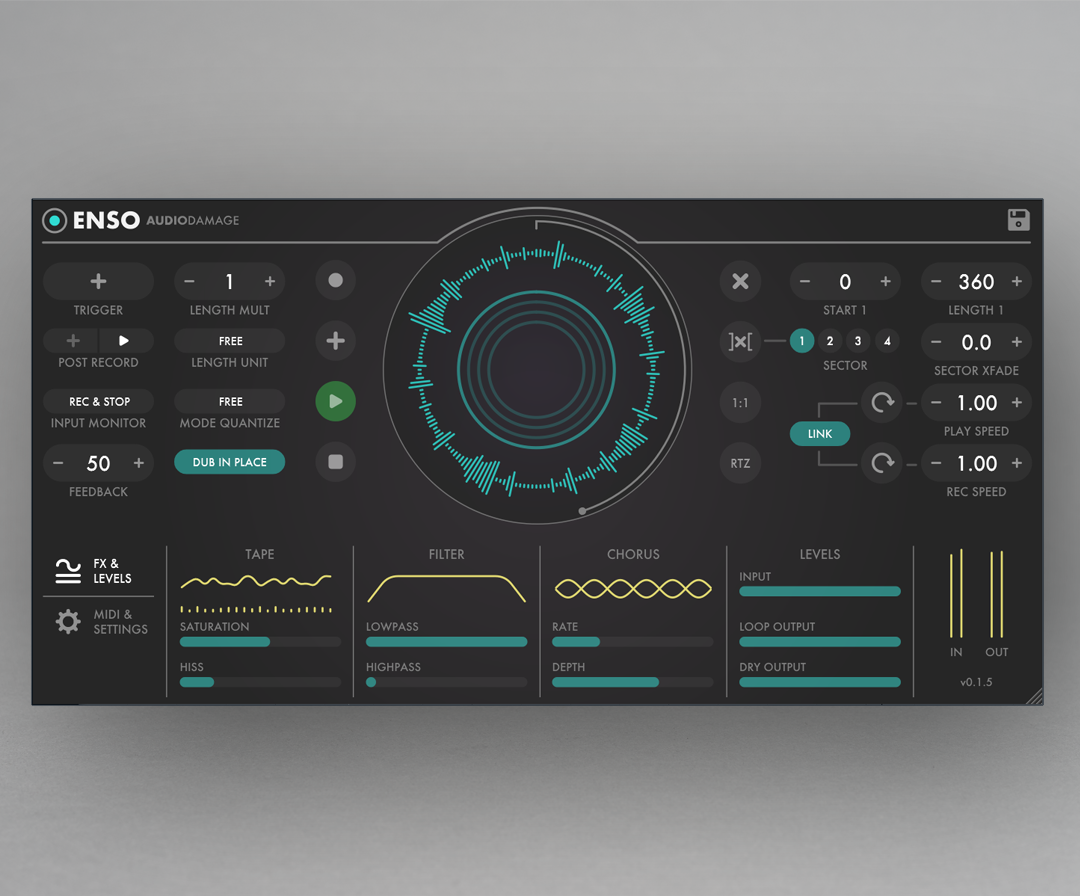Clariphonic DSP for Mac Latest version 2020 Free Here
Clariphonic DSP for Mac is modeled from scratch, using all the new algorithms and filters, the Clariphonic DSP Mk sounds noticeably smoother than the original plug-in, and much more powerful, thanks to 3 processing modes: Classic Stereo, Dual Mono and Mid-Side.With custom resampling algorithms specifically designed for shelves whose highest angle is 38k, this truly captures the spirit of analog equipment.
The plug-in works with different audio editors. It provides access to special filters controlling and adjusting mid-volume, top and bottom parameters of recordings. The app has three processing modes that optimize the processing of tracks along with an equalizer for output customization.
Want more from Kush? Visit Gregory Scott, aka 'ubk' from Kush Audio, gives a thorough rundown of the controls on the UB. Clariphonic DSP Kush Audio – UBK 1.1 32-bit and 64-bit Mac OSx 10.10, 10.11, 10.12, 10.13, 10.14 Direct Download (179MB). Mac Torrent.net To share this torrent use the code below and insert it into comments, status messages, forum posts or your signature. Torrent: Kush Audio UBK-1 AU VST MAC OSX Kush Audio UBK-1 AU VST MAC OSX.
The mix clarity you’ve been searching for:
If, like with most recording engineers, you’re constantly on the hunt for the perfect smooth-and-silky top end “air” to your tracks, the Clariphonic DSP mkII plug-in offers it to you on a silver platter. The parallel processing through dual Focus and Clarity engines treat high and low frequencies independently and then sum them before their independent gain controls, giving you an airier, more open, polished and detailed track. Modeled from Kush’s rack unit, Kush is very first to offer this quality and simplicity in a plug-in.
Incredibly easy to get your sound:
Just like its father, the rack unit, the Clariphonic DSP mkII takes the constant tweaking out of the process with two main controls per channel (Focus and Clarity). Toggle switches for either control let you further define your signal’s character. What used to take hours of critical listening and constantly tweaking a lot of controls, you can now do with a throw of a couple switches and a turn of a single knob. And the sound never gets brittle. Just more, and more clear. Put simply, it’s extremely difficult to get a bad sound out of this box.
original source:

The original Kush Audio Clariphonic was the worlds first two-channel, fully parallel dual high-shelving equalizer. In basic terms, that means it splits your signal, dials the effected signals exactly the way you need them, and lets you sum the signals back together for a full, and clear sounding track. Ever split a drum track, compress one and put them back together for that huge punch while maintaining a natural sound? Same concept. And it does it all internally without giving you any of the headaches of multiple signal paths and latency issues that can sometimes accompany this process.
The version of Clariphonic DSP for Mac is available as a free download on our website. Our built-in antivirus checked this Mac download and rated it as 100% safe. This Mac application is a product of Kush Audio. Clariphonic DSP for Mac lies within Audio & Video Tools, more precisely Music Production.The most significant improvements, however, have been made under the hood, with brand new filters very accurately emulating the dynamic nature of the hardware, and newly customised oversampling and filtering algorithms targeted at the high frequencies that are Clariphonic’s area of operation. Theoretically, it all helps to produce a more open sound than that of the original plugin.
The Sound:
So, that’s how it works, but how does it sound? Clariphonic has a painfully addictive sound quality that makes it easy to see why it is often described as a ‘desert island’ processor. The danger with Clariphonic is going overboard with it. Each of the filters gives a rather transparent sweetening to the sound. However, it’s very easy to get carried away and keep cranking the dial, especially the “Clarity” engine. If you find an old manual for the hardware Clariphonic, even it advises halving the amount of processing you think you need.
Features:

- 2-channel parallel equalizer plug-in
- Simple to use interface
- Splits incoming audio into 6 parallel paths
- 2 x Clarity engines
- 2 x Focus engines
- 2 x Full Frequency direct through paths
- Boost only EQ architecture
- Full set of front-panel controls
- Perfect for mixes and individual stems
- Classic, Stereo, and Dual Mono modes
- AAX2, VST, AU
Tech Specs:
- Software Type:EQ
- Platform:Mac, PC
- Upgrade/Full:Full
- Download/Boxed:Download
- Bit Depth:32-bit/64-bit
- Format:AAX2, VST, AU
Clariphonic DSP for Mac Latest version 2020 Free Download from link is given Below
Article Content
The Clariphonic Equalizer
The Clariphonic EQ is a unique twist on EQ. Rather than taking a source, targeting a frequency band, and adjusting that, the Clariphonic takes a source and creates a filtered version which is then blended back in to the original source in parallel. Parallel equalization has sort of been thought of as a novelty process – but if you want to do broad boosts it actually makes a lot of sense. Negative filtering has notably less phase distortion than broad band boosts – as the most prominent artifact is resonance rather than ring and ripple. If the slope is gradual enough and the filter itself is well manufactured, the resonance is almost negligible. It’s one of the reasons people will say “cut, don’t boost” when it comes to EQ. In other words, rather than boosting a single signal and getting the artifacts that produces, you create a second signal with less artifacts and blend that in with the dry signal. Pretty sharp.
Transparency
Kush Ubk Mac Torrent Kickass
The Clariphonic focuses on making boosts that are equally as transparent as cuts. And it is arguably one of the most transparent EQs available – certainly the most transparent in my own experience.
Application
In application, the Clariphonic does take a little getting used to. There are a number of reasons for this – the first being that it is supremely transparent. Thus, it’s easy to overdo it. It also relies on a non-linear gain structure. In other words, cranking one of the knobs from 9’o’clock to 10’o’clock will not yield the same amount of frequency boost as cranking the knob from 12’o’clock to 1’o’clock. Now at first this might seem awkward and poor architecture – but once you get used to it, it actually makes a lot of sense.
Kush Ubk Mac Torrent Download
The first half of the gain knobs are dedicated toward “precision” work. This is good for situations where subtle adjustments can have big results – like EQ’ing the entire mix. The second half is dedicated to large boosts, which is good for applications where you need tons of clean EQ gain.
Knobs
Lastly, the labeling of the controls is a bit odd. Terms like “Focus” and “Shimmer” are very much dependent on what’s already living there. This forces a semi-trial and error approach to getting the settings. This is where the “parallel only” switch can be very useful. by switching to the parallel signal you can hear very very clearly what parts of the source are being emphasized. I highly recommend taking advantage of this knob, because often multiple settings will sound good – and it becomes a matter of which is best – and any perspective that can help that decision is extremely useful.
Conclusion
Kush Ubk Mac Torrents

Kush Ubk Mac Torrent Pirate Bay
My end conclusion on this is that not all gear is meant for all things. However, the Clariphonic EQ is one of those pieces of gear that is. The sheer transparency alone makes this piece unique and effective in a multitude of situations – equally as useful in the mix as across the two bus – and for the price point it is more than worth it.
—
UBK-1 Plug-in
There are many many software compressors available at this point. I asked designer Greg Scott why the world needs another one. His responses went something to the tune of – the world doesn’t need one, but I do! Greg designs his gear the way he wants it to work – rather than specifically emulating previous traditional gear. Hence we get this brilliant mess of a compressor.
I say mess because there’s a ton of stuff packed into this plug – almost like a really quirky channel strip. But I also say brilliant because the application and coordination of this program works together, each stage corresponding elegantly – making a complicated set of processes fairly simple.
Rhythmic Compression
The advertised intent of the UBK-1 is to use compression to generate “movement.” I feel it lives up to it’s intended purpose. The most compelling aspect of the UBK-1 is the swing of the compression settings, and the degree to which that swing can occur. Each setting has a unique attack and release curve that can be used to either emphasize the push or pull of the sound.
Easy practical applications for this include creating new internal dynamics or drawing attention to ghost notes, or manipulating cymbal decay, reverbs, or delays. Adding drive, bounce, or forward motion is the mission here – rather than simply shaping the envelope of a sound.

Saturation
However, prior to the compression stage is an equally compelling saturation stage. The saturation stage generates some rich harmonics as well as adds it’s own mild compression. The result is a notably colored and “thicker” sound. The trade off is that the sound “softens” a bit – so finding that sweet spot can take a little fine tuning. The degree of coloration can be pretty subtle between each end of the dial, but listening for the proper blend of thickness and color verse softness makes for a good listening marker.
Additionally, I find a very light blend of saturated signal goes a long way. The saturation blended into the compression is extremely useful for giving a sound “thickness”.
Density Setting
Moving along with the idea of thickness – the density control does this in designated frequency areas. It’s a bit allusive but I recommend setting it high and flipping between mid and high – you’ll either like one, the other, or neither – and usually fairly quickly. It’s almost cheating, but if you happen to have the Clariphonic EQ, pushing the mid density up on the UBK-1 and boosting the “Focus” on the “Tight” setting will push a source extremely forward.
Conclusion
The UBK-1 took me about two weeks of experimentation before I began feeling like I really had it down under my belt. But I believe it is more than worth it. Unfortunately, the days of software piracy people may be forgetting that plugins are individual tools and need their own mastery. Taking the time to really explore and master a particular piece of gear really pays off – and the UBK-1 has proven extremely versatile and useful as I continue to utilize it.
FREE Masterclass: Low-End Mixing Secrets
Downloaded Over 19,455 times!
Discover how to make your kick and bass hit hard by cutting (NOT boosting) the right frequencies! Plus, more counterintuitive ways to get fuller yet controlled low-end in your mix. Download this 40-minute workshop by Matthew Weiss, now for FREE!

